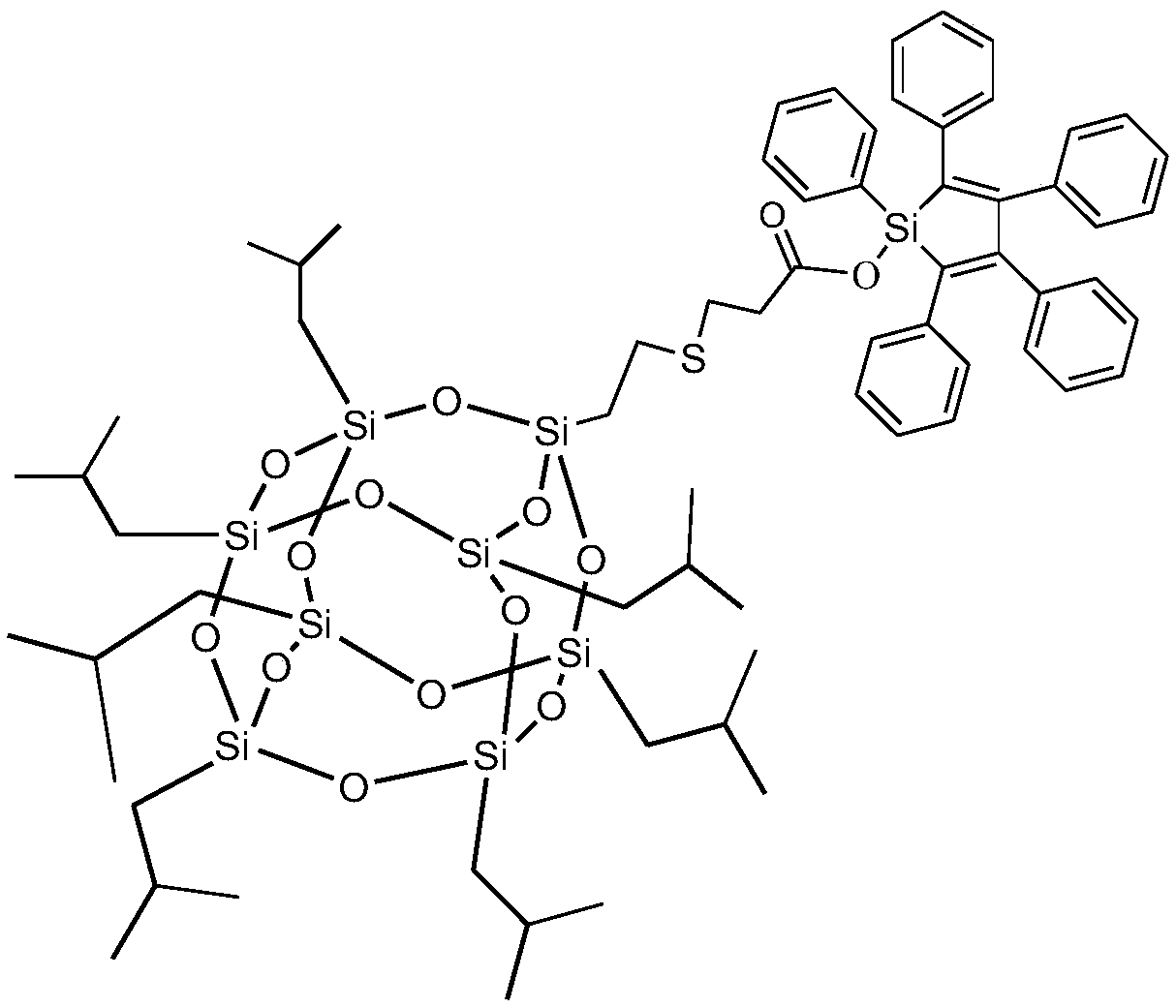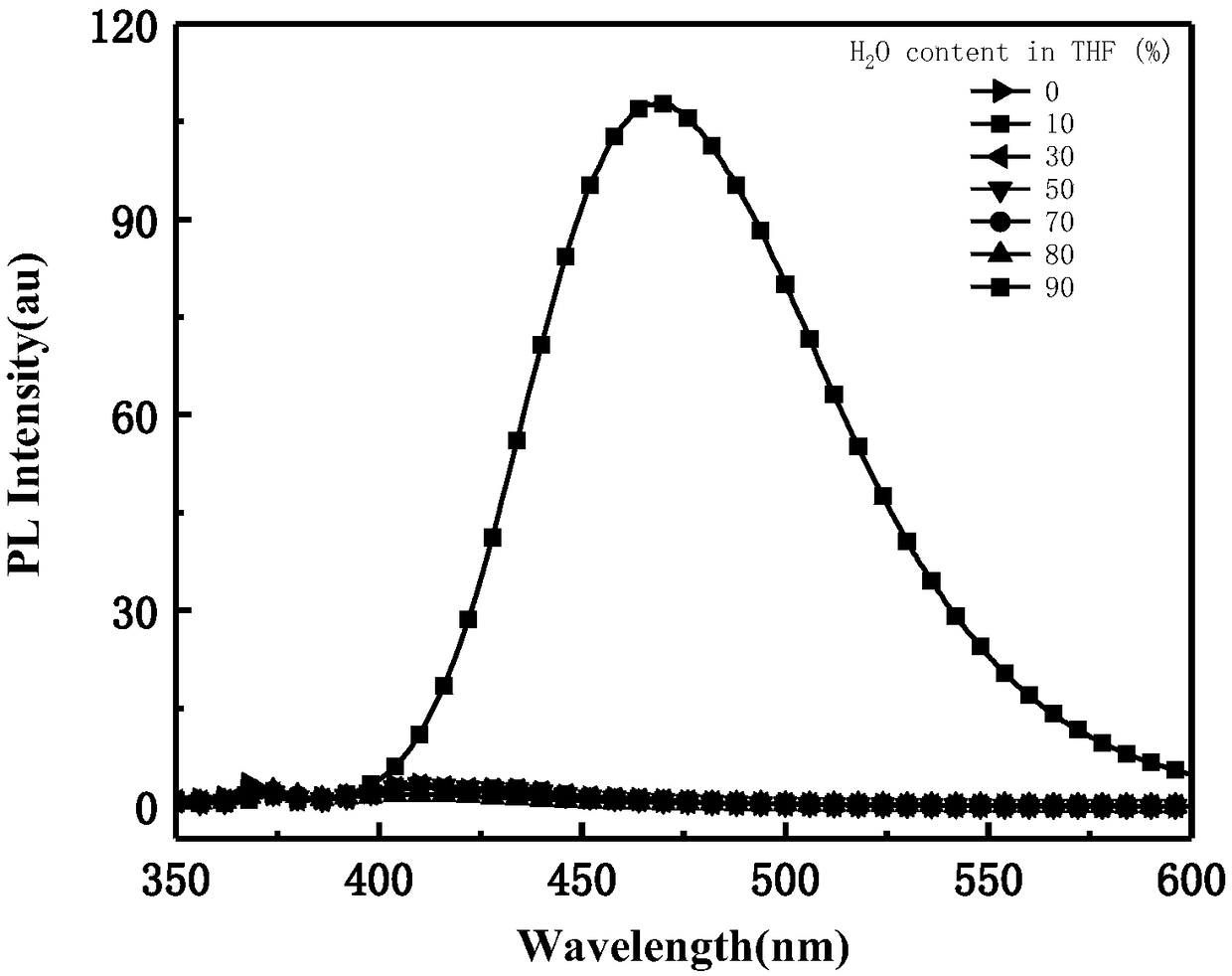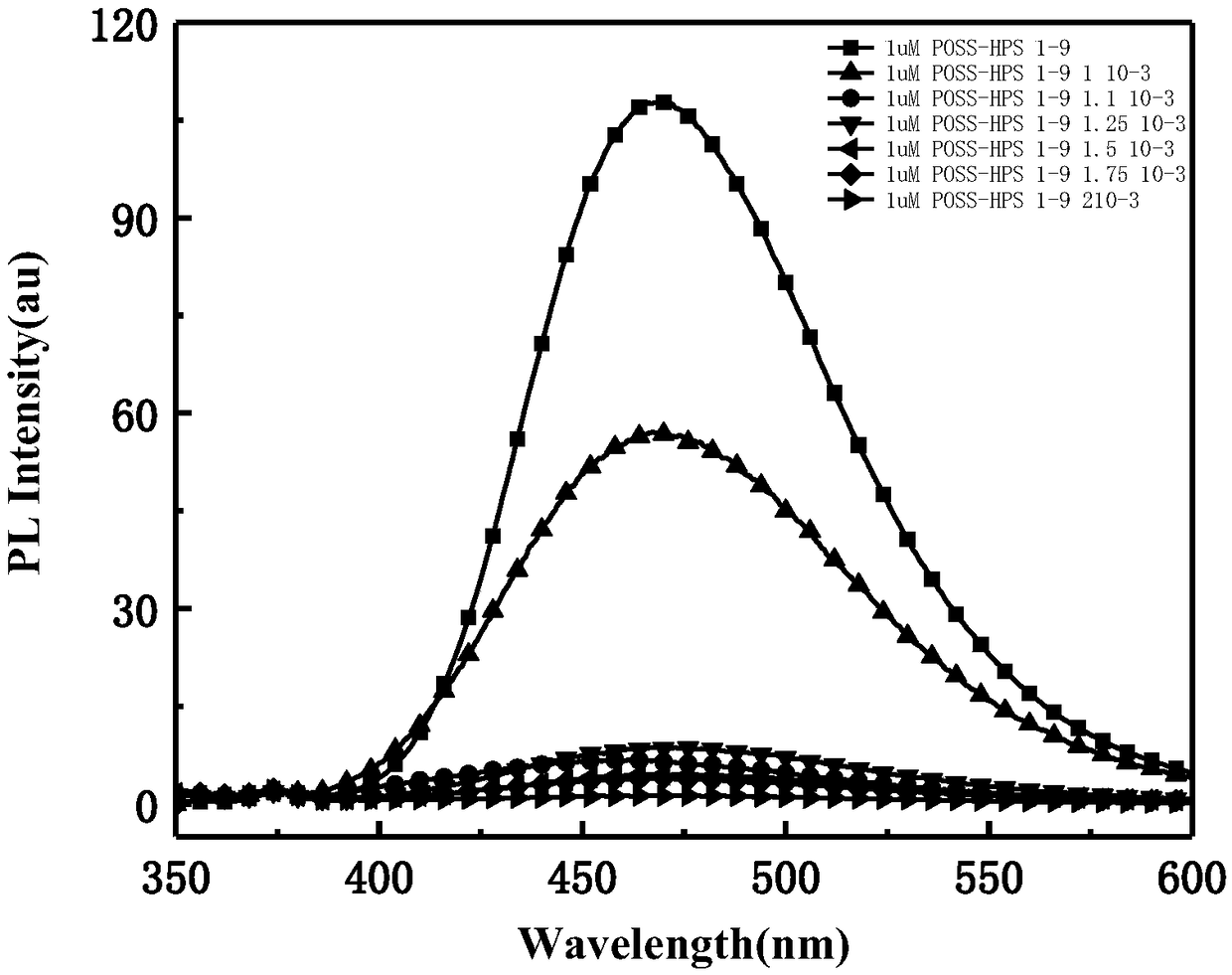Preparation method and applications of aggregation-induced emission probe material
A technology of aggregation-induced luminescence and probes, which is applied to luminescent materials, material analysis by optical means, and material analysis, etc., can solve the problems of drug detection being easily affected by external conditions, long detection time, and cumbersome detection. Enhanced sensitivity, enhanced fluorescence performance, the effect of excellent fluorescence performance
- Summary
- Abstract
- Description
- Claims
- Application Information
AI Technical Summary
Problems solved by technology
Method used
Image
Examples
Embodiment 1
[0027] A method for preparing an aggregation-induced luminescent probe material, comprising the following steps:
[0028] 1) Add 1.6g of monocarboxyl oligomeric silsesquioxane and 100mL N,N-dimethylformamide into a round bottom flask, stir and dissolve to obtain carboxylated oligomeric silsesquioxane solution;
[0029] 2) Add 0.7g of 4-dimethylaminopyridine and 0.9g of 1-(3-dimethylaminopropyl)-3-ethylcarbodiimide hydrochloride to the carboxylated oligomeric silsesquioxane solution salt and 2.7g triethylamine, stirred in an ice-water bath for 1h to obtain a mixed solution;
[0030] 3) Add 2g of 1-hydroxypentaphenylsilole to the mixed solution, and keep it warm for reaction. The keep warm reaction temperature is 20°C, and the reaction time is 24h. Pour the solution obtained after the reaction into 500mL distilled water, and stir to get a white precipitate ;
[0031] 4) A white precipitate was obtained after suction filtration with a Buchner funnel. The precipitate was washed ...
Embodiment 2
[0037] A method for preparing an aggregation-induced luminescent probe material, comprising the following steps:
[0038] 1) Add 1.9g octacarboxyl oligomeric silsesquioxane and 100mL N,N-dimethylformamide into a round bottom flask, stir and dissolve to obtain carboxylated oligomeric silsesquioxane solution;
[0039] 2) Add 0.8g of 4-dimethylaminopyridine and 1g of 1-(3-dimethylaminopropyl)-3-ethylcarbodiimide hydrochloride to the carboxylated oligomeric silsesquioxane solution and 2.8g triethylamine, stirred in an ice-water bath for 1h to obtain a mixed solution;
[0040] 3) Add 3.9g of 1-aminotetraphenylethylene to the mixture, and keep it warm for reaction. The keep warm reaction temperature is 20°C, and the reaction time is 24h. Pour the solution obtained after the reaction into 500mL of distilled water, and stir to get a white precipitate ;
[0041]4) A white precipitate was obtained after suction filtration with a Buchner funnel. The precipitate was washed with acetonit...
Embodiment 3
[0047] A method for preparing an aggregation-induced luminescent probe material, comprising the following steps:
[0048] 1) Add 1.7g of monocarboxyl oligomeric silsesquioxane and 110mL N,N-dimethylformamide into a round bottom flask, stir and dissolve to obtain carboxylated oligomeric silsesquioxane solution;
[0049] 2) Add 0.75g of 4-dimethylaminopyridine and 1g of 1-(3-dimethylaminopropyl)-3-ethylcarbodiimide hydrochloride to the carboxylated oligomeric silsesquioxane solution and 2.8g triethylamine, stirred in an ice-water bath for 1.5h to obtain a mixed solution;
[0050] 3) Add 3g of 1-hydroxypentaphenylsilole to the phase mixture, and keep it warm for reaction. The keep warm reaction temperature is 22°C, and the reaction time is 25h. Pour the solution obtained after the reaction into 550mL distilled water, and stir to get a white precipitate ;
[0051] 4) A white precipitate was obtained after suction filtration with a Buchner funnel. The precipitate was washed with ...
PUM
| Property | Measurement | Unit |
|---|---|---|
| particle size | aaaaa | aaaaa |
Abstract
Description
Claims
Application Information
 Login to View More
Login to View More - R&D
- Intellectual Property
- Life Sciences
- Materials
- Tech Scout
- Unparalleled Data Quality
- Higher Quality Content
- 60% Fewer Hallucinations
Browse by: Latest US Patents, China's latest patents, Technical Efficacy Thesaurus, Application Domain, Technology Topic, Popular Technical Reports.
© 2025 PatSnap. All rights reserved.Legal|Privacy policy|Modern Slavery Act Transparency Statement|Sitemap|About US| Contact US: help@patsnap.com



